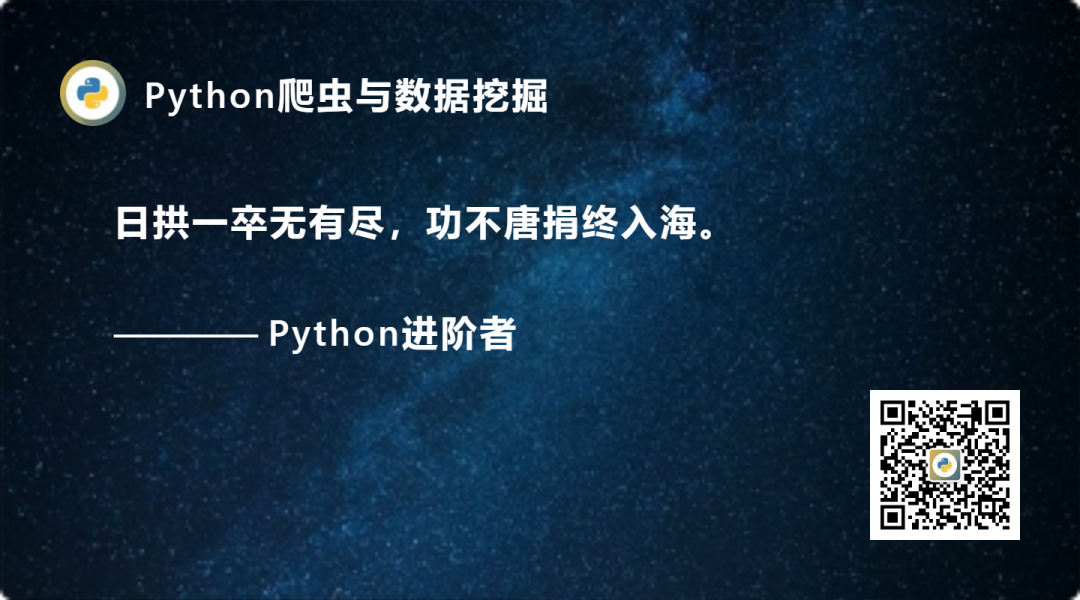击上方“ Python爬虫与数据挖掘 ”,进行关注
回复“书籍”即可获赠Python从入门到进阶共10本电子书
今
日
鸡
汤
此曲有意无人传,愿随春风寄燕然。

1. 什么是Hook
经常会听到钩子函数(hook function)这个概念,最近在看目标检测开源框架mmdetection,里面也出现大量Hook的编程方式,那到底什么是hook?hook的作用是什么?
what is hook ?钩子hook,顾名思义,可以理解是一个挂钩,作用是有需要的时候挂一个东西上去。具体的解释是:钩子函数是把我们自己实现的hook函数在某一时刻挂接到目标挂载点上。
hook函数的作用 举个例子,hook的概念在windows桌面软件开发很常见,特别是各种事件触发的机制; 比如C++的MFC程序中,要监听鼠标左键按下的时间,MFC提供了一个onLeftKeyDown的钩子函数。很显然,MFC框架并没有为我们实现onLeftKeyDown具体的操作,只是为我们提供一个钩子,当我们需要处理的时候,只要去重写这个函数,把我们需要操作挂载在这个钩子里,如果我们不挂载,MFC事件触发机制中执行的就是空的操作。
从上面可知
hook函数是程序中预定义好的函数,这个函数处于原有程序流程当中(暴露一个钩子出来)
我们需要再在有流程中钩子定义的函数块中实现某个具体的细节,需要把我们的实现,挂接或者注册(register)到钩子里,使得hook函数对目标可用
hook 是一种编程机制,和具体的语言没有直接的关系
如果从设计模式上看,hook模式是模板方法的扩展
钩子只有注册的时候,才会使用,所以原有程序的流程中,没有注册或挂载时,执行的是空(即没有执行任何操作)
本文用python来解释hook的实现方式,并展示在开源项目中hook的应用案例。hook函数和我们常听到另外一个名称:回调函数(callback function)功能是类似的,可以按照同种模式来理解。

2. hook实现例子
据我所知,hook函数最常使用在某种流程处理当中。这个流程往往有很多步骤。hook函数常常挂载在这些步骤中,为增加额外的一些操作,提供灵活性。
下面举一个简单的例子,这个例子的目的是实现一个通用往队列中插入内容的功能。流程步骤有2个
需要再插入队列前,对数据进行筛选
input_filter_fn插入队列
insert_queueclass ContentStash(object): """ content stash for online operation pipeline is 1. input_filter: filter some contents, no use to user 2. insert_queue(redis or other broker): insert useful content to queue """ def init(self): self.input_filter_fn = None self.broker = [] def register_input_filter_hook(self, input_filter_fn): """ register input filter function, parameter is content dict Args: input_filter_fn: input filter function Returns: """ self.input_filter_fn = input_filter_fn def insert_queue(self, content): """ insert content to queue Args: content: dict Returns: """ self.broker.append(content) def input_pipeline(self, content, use=False): """ pipeline of input for content stash Args: use: is use, defaul False content: dict Returns: """ if not use: return # input filter if self.input_filter_fn: _filter = self.input_filter_fn(content) # insert to queue if not _filter: self.insert_queue(content)# test## 实现一个你所需要的钩子实现:比如如果content 包含time就过滤掉,否则插入队列def input_filter_hook(content): """ test input filter hook Args: content: dict Returns: None or content """ if content.get('time') is None: return else: return content# 原有程序content = {'filename': 'test.jpg', 'b64_file': "#test", 'data': {"result": "cat", "probility": 0.9}}content_stash = ContentStash('audit', work_dir='')# 挂上钩子函数, 可以有各种不同钩子函数的实现,但是要主要函数输入输出必须保持原有程序中一致,比如这里是contentcontent_stash.register_input_filter_hook(input_filter_hook)# 执行流程content_stash.input_pipeline(content)
3. hook在开源框架中的应用
3.1 keras
在深度学习训练流程中,hook函数体现的淋漓尽致。
一个训练过程(不包括数据准备),会轮询多次训练集,每次称为一个epoch,每个epoch又分为多个batch来训练。流程先后拆解成:
开始训练
训练一个epoch前
训练一个batch前
训练一个batch后
训练一个epoch后
评估验证集
结束训练
这些步骤是穿插在训练一个batch数据的过程中,这些可以理解成是钩子函数,我们可能需要在这些钩子函数中实现一些定制化的东西,比如在 训练一个epoch后 我们要保存下训练的模型,在 结束训练 时用最好的模型执行下测试集的效果等等。
keras中是通过各种回调函数来实现钩子hook功能的。这里放一个callback的父类,定制时只要继承这个父类,实现你过关注的钩子就可以了。
@keras_export('keras.callbacks.Callback')class Callback(object): """Abstract base class used to build new callbacks. Attributes: params: Dict. Training parameters (eg. verbosity, batch size, number of epochs...). model: Instance of `keras.models.Model`. Reference of the model being trained. The `logs` dictionary that callback methods take as argument will contain keys for quantities relevant to the current batch or epoch (see method-specific docstrings). """ def __init__(self): self.validation_data = None # pylint: disable=g-missing-from-attributes self.model = None # Whether this Callback should only run on the chief worker in a # Multi-Worker setting. # TODO(omalleyt): Make this attr public once solution is stable. self._chief_worker_only = None self._supports_tf_logs = False def set_params(self, params): self.params = params def set_model(self, model): self.model = model @doc_controls.for_subclass_implementers @generic_utils.default def on_batch_begin(self, batch, logs=None): """A backwards compatibility alias for `on_train_batch_begin`.""" @doc_controls.for_subclass_implementers @generic_utils.default def on_batch_end(self, batch, logs=None): """A backwards compatibility alias for `on_train_batch_end`.""" @doc_controls.for_subclass_implementers def on_epoch_begin(self, epoch, logs=None): """Called at the start of an epoch. Subclasses should override for any actions to run. This function should only be called during TRAIN mode. Arguments: epoch: Integer, index of epoch. logs: Dict. Currently no data is passed to this argument for this method but that may change in the future. """ @doc_controls.for_subclass_implementers def on_epoch_end(self, epoch, logs=None): """Called at the end of an epoch. Subclasses should override for any actions to run. This function should only be called during TRAIN mode. Arguments: epoch: Integer, index of epoch. logs: Dict, metric results for this training epoch, and for the validation epoch if validation is performed. Validation result keys are prefixed with `val_`. """ @doc_controls.for_subclass_implementers @generic_utils.default def on_train_batch_begin(self, batch, logs=None): """Called at the beginning of a training batch in `fit` methods. Subclasses should override for any actions to run. Arguments: batch: Integer, index of batch within the current epoch. logs: Dict, contains the return value of `model.train_step`. Typically, the values of the `Model`'s metrics are returned. Example: `{'loss': 0.2, 'accuracy': 0.7}`. """ # For backwards compatibility. self.on_batch_begin(batch, logs=logs) @doc_controls.for_subclass_implementers @generic_utils.default def on_train_batch_end(self, batch, logs=None): """Called at the end of a training batch in `fit` methods. Subclasses should override for any actions to run. Arguments: batch: Integer, index of batch within the current epoch. logs: Dict. Aggregated metric results up until this batch. """ # For backwards compatibility. self.on_batch_end(batch, logs=logs) @doc_controls.for_subclass_implementers @generic_utils.default def on_test_batch_begin(self, batch, logs=None): """Called at the beginning of a batch in `evaluate` methods. Also called at the beginning of a validation batch in the `fit` methods, if validation data is provided. Subclasses should override for any actions to run. Arguments: batch: Integer, index of batch within the current epoch. logs: Dict, contains the return value of `model.test_step`. Typically, the values of the `Model`'s metrics are returned. Example: `{'loss': 0.2, 'accuracy': 0.7}`. """ @doc_controls.for_subclass_implementers @generic_utils.default def on_test_batch_end(self, batch, logs=None): """Called at the end of a batch in `evaluate` methods. Also called at the end of a validation batch in the `fit` methods, if validation data is provided. Subclasses should override for any actions to run. Arguments: batch: Integer, index of batch within the current epoch. logs: Dict. Aggregated metric results up until this batch. """ @doc_controls.for_subclass_implementers @generic_utils.default def on_predict_batch_begin(self, batch, logs=None): """Called at the beginning of a batch in `predict` methods. Subclasses should override for any actions to run. Arguments: batch: Integer, index of batch within the current epoch. logs: Dict, contains the return value of `model.predict_step`, it typically returns a dict with a key 'outputs' containing the model's outputs. """ @doc_controls.for_subclass_implementers @generic_utils.default def on_predict_batch_end(self, batch, logs=None): """Called at the end of a batch in `predict` methods. Subclasses should override for any actions to run. Arguments: batch: Integer, index of batch within the current epoch. logs: Dict. Aggregated metric results up until this batch. """ @doc_controls.for_subclass_implementers def on_train_begin(self, logs=None): """Called at the beginning of training. Subclasses should override for any actions to run. Arguments: logs: Dict. Currently no data is passed to this argument for this method but that may change in the future. """ @doc_controls.for_subclass_implementers def on_train_end(self, logs=None): """Called at the end of training. Subclasses should override for any actions to run. Arguments: logs: Dict. Currently the output of the last call to `on_epoch_end()` is passed to this argument for this method but that may change in the future. """ @doc_controls.for_subclass_implementers def on_test_begin(self, logs=None): """Called at the beginning of evaluation or validation. Subclasses should override for any actions to run. Arguments: logs: Dict. Currently no data is passed to this argument for this method but that may change in the future. """ @doc_controls.for_subclass_implementers def on_test_end(self, logs=None): """Called at the end of evaluation or validation. Subclasses should override for any actions to run. Arguments: logs: Dict. Currently the output of the last call to `on_test_batch_end()` is passed to this argument for this method but that may change in the future. """ @doc_controls.for_subclass_implementers def on_predict_begin(self, logs=None): """Called at the beginning of prediction. Subclasses should override for any actions to run. Arguments: logs: Dict. Currently no data is passed to this argument for this method but that may change in the future. """ @doc_controls.for_subclass_implementers def on_predict_end(self, logs=None): """Called at the end of prediction. Subclasses should override for any actions to run. Arguments: logs: Dict. Currently no data is passed to this argument for this method but that may change in the future. """ def _implements_train_batch_hooks(self): """Determines if this Callback should be called for each train batch.""" return (not generic_utils.is_default(self.on_batch_begin) or not generic_utils.is_default(self.on_batch_end) or not generic_utils.is_default(self.on_train_batch_begin) or not generic_utils.is_default(self.on_train_batch_end))
这些钩子的原始程序是在模型训练流程中的
keras源码位置: tensorflow\python\keras\engine\training.py
部分摘录如下(## I am hook):
# Container that configures and calls `tf.keras.Callback`s. if not isinstance(callbacks, callbacks_module.CallbackList): callbacks = callbacks_module.CallbackList( callbacks, add_history=True, add_progbar=verbose != 0, model=self, verbose=verbose, epochs=epochs, steps=data_handler.inferred_steps) ## I am hook callbacks.on_train_begin() training_logs = None # Handle fault-tolerance for multi-worker. # TODO(omalleyt): Fix the ordering issues that mean this has to # happen after `callbacks.on_train_begin`. data_handler._initial_epoch = ( # pylint: disable=protected-access self._maybe_load_initial_epoch_from_ckpt(initial_epoch)) for epoch, iterator in data_handler.enumerate_epochs(): self.reset_metrics() callbacks.on_epoch_begin(epoch) with data_handler.catch_stop_iteration(): for step in data_handler.steps(): with trace.Trace( 'TraceContext', graph_type='train', epoch_num=epoch, step_num=step, batch_size=batch_size): ## I am hook callbacks.on_train_batch_begin(step) tmp_logs = train_function(iterator) if data_handler.should_sync: context.async_wait() logs = tmp_logs # No error, now safe to assign to logs. end_step = step + data_handler.step_increment callbacks.on_train_batch_end(end_step, logs) epoch_logs = copy.copy(logs) # Run validation. ## I am hook callbacks.on_epoch_end(epoch, epoch_logs)
3.2 mmdetection
mmdetection是一个目标检测的开源框架,集成了许多不同的目标检测深度学习算法(pytorch版),如faster-rcnn, fpn, retianet等。里面也大量使用了hook,暴露给应用实现流程中具体部分。
详见 https://github.com/open-mmlab/mmdetection
这里看一个训练的调用例子(摘录)( https://github.com/open-mmlab/mmdetection/blob/5d592154cca589c5113e8aadc8798bbc73630d98/mmdet/apis/train.py )
def train_detector(model, dataset, cfg, distributed=False, validate=False, timestamp=None, meta=None): logger = get_root_logger(cfg.log_level) # prepare data loaders # put model on gpus # build runner optimizer = build_optimizer(model, cfg.optimizer) runner = EpochBasedRunner( model, optimizer=optimizer, work_dir=cfg.work_dir, logger=logger, meta=meta) # an ugly workaround to make .log and .log.json filenames the same runner.timestamp = timestamp # fp16 setting # register hooks runner.register_training_hooks(cfg.lr_config, optimizer_config, cfg.checkpoint_config, cfg.log_config, cfg.get('momentum_config', None)) if distributed: runner.register_hook(DistSamplerSeedHook()) # register eval hooks if validate: # Support batch_size > 1 in validation eval_cfg = cfg.get('evaluation', {}) eval_hook = DistEvalHook if distributed else EvalHook runner.register_hook(eval_hook(val_dataloader, **eval_cfg)) # user-defined hooks if cfg.get('custom_hooks', None): custom_hooks = cfg.custom_hooks assert isinstance(custom_hooks, list), \ f'custom_hooks expect list type, but got {type(custom_hooks)}' for hook_cfg in cfg.custom_hooks: assert isinstance(hook_cfg, dict), \ 'Each item in custom_hooks expects dict type, but got ' \ f'{type(hook_cfg)}' hook_cfg = hook_cfg.copy() priority = hook_cfg.pop('priority', 'NORMAL') hook = build_from_cfg(hook_cfg, HOOKS) runner.register_hook(hook, priority=priority)
4. 总结
本文介绍了hook的概念和应用,并给出了python的实现细则。希望对比有帮助。总结如下:
hook函数是流程中预定义好的一个步骤,没有实现
挂载或者注册时, 流程执行就会执行这个钩子函数
回调函数和hook函数功能上是一致的
hook设计方式带来灵活性,如果流程中有一个步骤,你想让调用方来实现,你可以用hook函数
作者简介:wedo实验君, 数据分析师;热爱生活,热爱写作
**********---**--****-------------- End **********---**--****--------------
往期精彩文章推荐:

欢迎大家点赞,留言,转发,转载,****感谢大家的相伴与支持
想加入Python学习群请在后台回复【入群】
万水千山总是情,点个【在看】行不行
/今日留言主题/
随便说一两句吧~~
本文分享自微信公众号 - Python爬虫与数据挖掘(crawler_python)。
如有侵权,请联系 support@oschina.cn 删除。
本文参与“OSC源创计划”,欢迎正在阅读的你也加入,一起分享。










